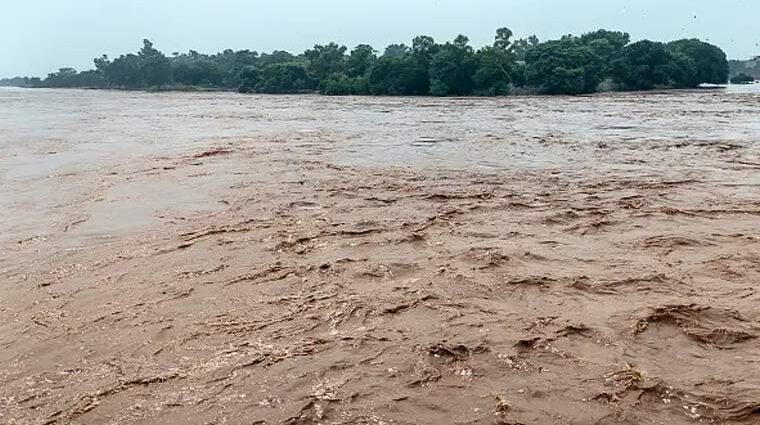Devastating Floods in Punjab: 3.8 Million People Affected, Thousands of Villages Submerged
Indian High Commissioner has on Thursday informed about release of more water from two points of Sutlej River.
Lahore (Web News)
Dangerous flooding in the Ravi, Sutlej and Chenab rivers, coupled with torrential rains, has wreaked havoc across Punjab, submerging hundreds of additional villages and destroying crops on vast tracts of farmland. Nearly 4,000 villages have been inundated and more than 3.8 million people affected, while urban flooding in Gujrat has brought daily life to a standstill.
According to a fresh communication from the Indian High Commission to the Indus Water Commission, the Sutlej River is experiencing high flood levels at Harike and Ferozepur, with additional surges expected to flow into Pakistan.
The Flood Forecasting Division Punjab confirmed that rivers across the province remain in a critical state. Extremely high flood levels are recorded at Head Sulemanki, Head Ganda Singh Wala and Head Sidhnai. The Chenab is also in extremely high flood at Head Khanki, Head Qadirabad, and Chiniot Bridge. The Ravi is experiencing high levels at Shahdara, Siphon, Balloki, and Head Sulemanki, while medium floods are reported at Trimmu, Jassar, Islam, and Mailsi Siphon. Low-level flooding has also been recorded at Guddu, Sukkur, Kotri, and Panjnad barrages.
In Khanewal district, the confluence of the Ravi and Chenab rivers has created a severe threat to Multan and Muzaffargarh. Despite controlled breaches made earlier, water pressure is rising dangerously, with levels at Head Muhammad Wala and Sher Shah reaching 412 feet—just five feet below the danger mark. Authorities have declared the next 12 hours critical.
In Hafizabad, the Chenab flood swept away fish farms covering thousands of acres, inflicting losses worth millions of rupees. Over 140 villages in the district have been severely damaged. In Kasur, the Sutlej carried a massive flood wave of 319,000 cusecs at Head Ganda Singh Wala, inundating over 100 villages and submerging 18,000 acres of farmland. Locals are now sheltering under the open sky with their livestock.
The breach of protective embankments in Luddan and Kabirwala has worsened the situation, allowing water to enter settlements and farmland. In Gujrat, 577 millimeters of rainfall within 24 hours caused catastrophic urban flooding, with four feet of water standing in main city squares and government offices inundated.
In Multan and Shujabad, the floodwaters reached the railway bridge, submerging several villages, while in Lodhran, breaches in embankments cut off road links to rural areas. Kot Momin in Sargodha, Chiniot, Chishtian, and parts of Vehari have also suffered severe inundation, with schools, government buildings, and homes destroyed. Rescue operations by the army and emergency services are ongoing.
According to Punjab Relief Commissioner Nabeel Javed, nearly 3.875 million people have been affected by the flooding, while 1.8 million have so far been relocated to safer places. At least 46 people have lost their lives in various flood-related incidents. The PDMA Director General confirmed that around 4,000 villages have been submerged, nearly 1.5 million people rescued, and more than one million livestock moved to safety. He added that floodwaters at Qadirabad are expected to re-enter already affected areas, while a 900,000 cusec flood wave will reach Sindh on the night of September 6–7.
Punjab’s agriculture has been devastated, with 1.326 million acres of crops destroyed. Faisalabad Division is the worst-hit, losing crops over 323,215 acres, followed by Gujranwala (262,000 acres) and Gujrat (238,000 acres). In Bahawalpur, 145,000 acres of farmland have been ruined; Sahiwal, 137,000 acres; and Lahore Division, nearly 100,000 acres.
The flood’s widespread destruction has wiped out crops, livestock, homes, schools, and infrastructure, leaving millions displaced and relief efforts stretched to the limit.

